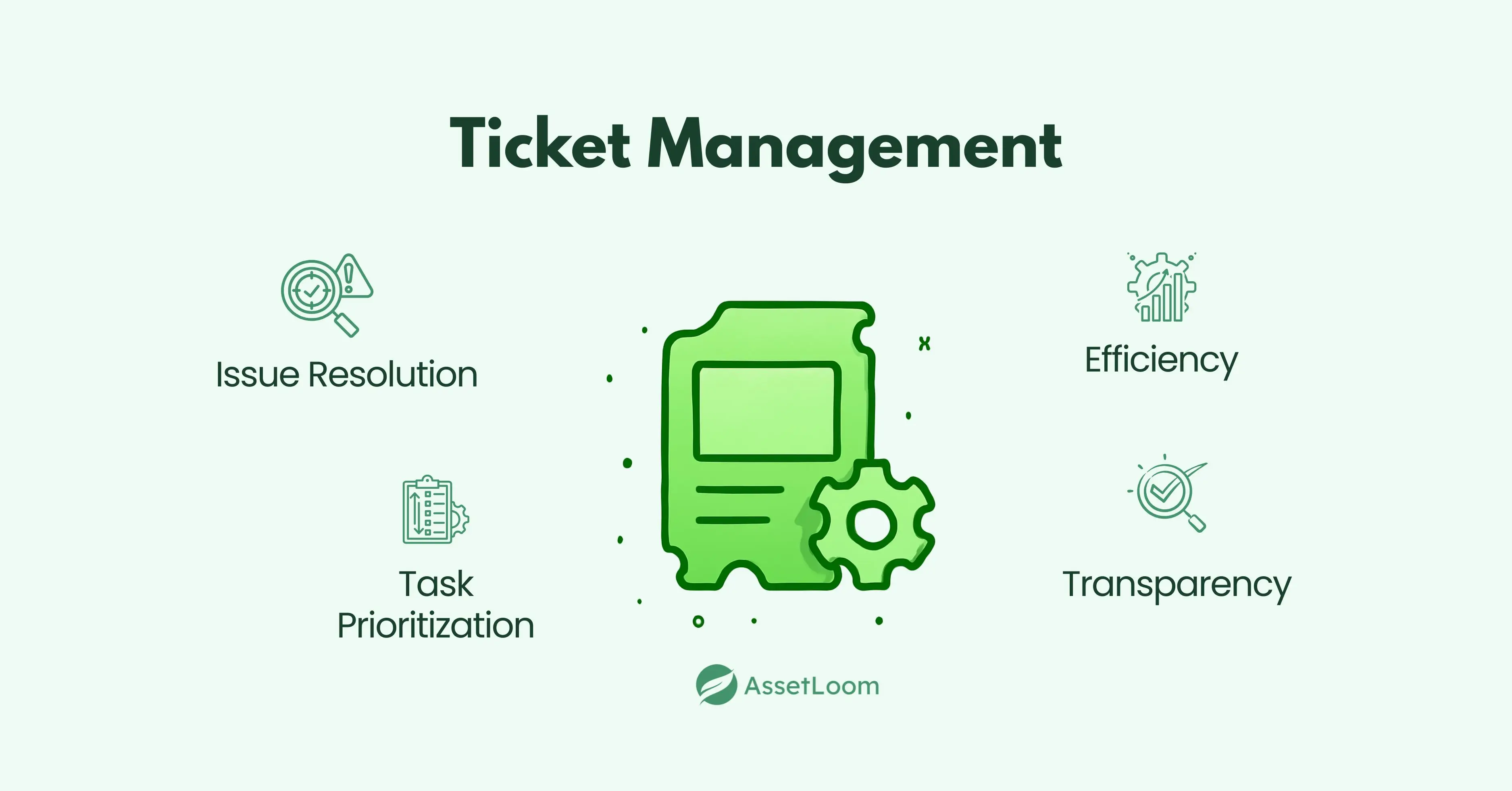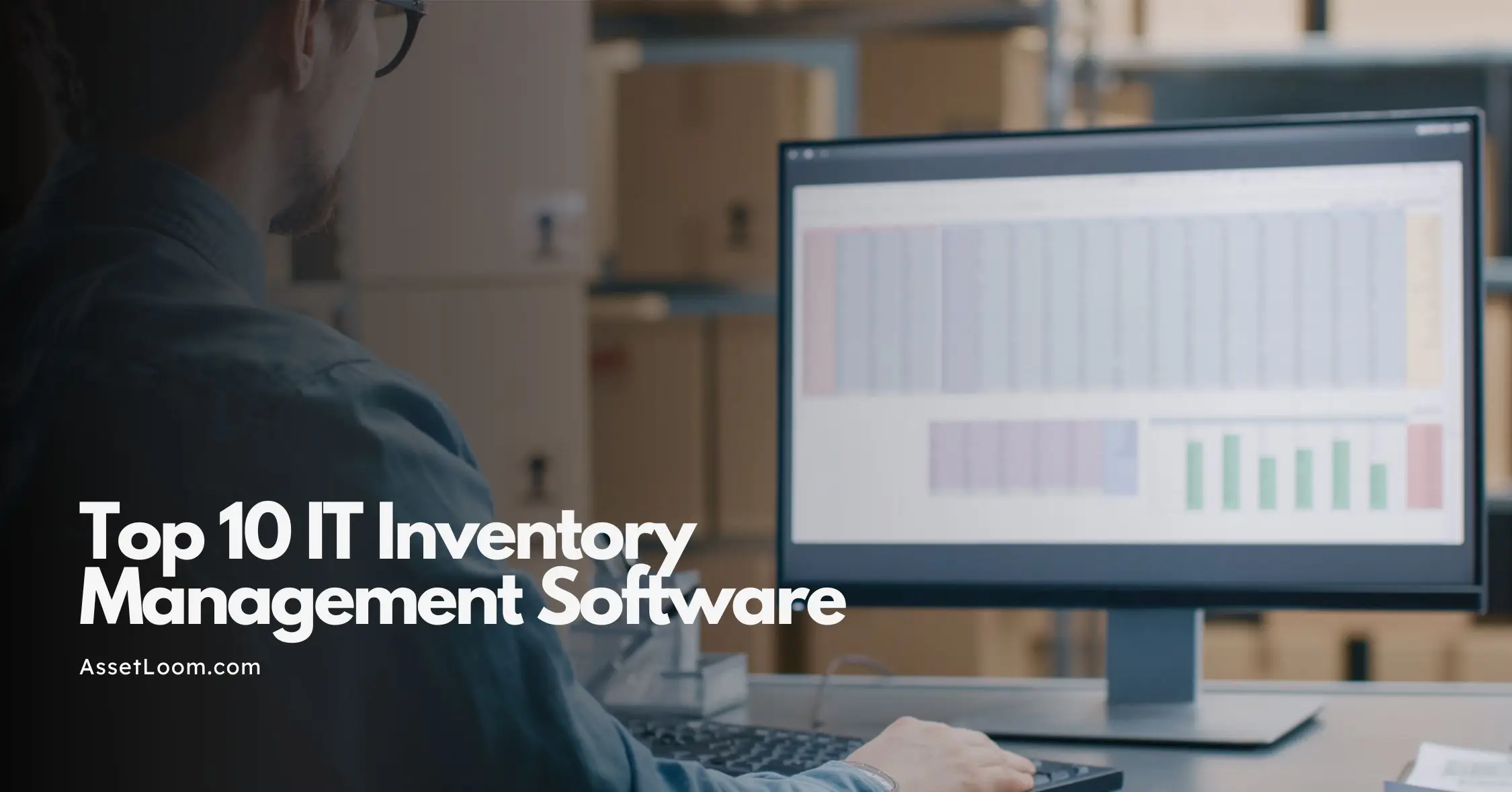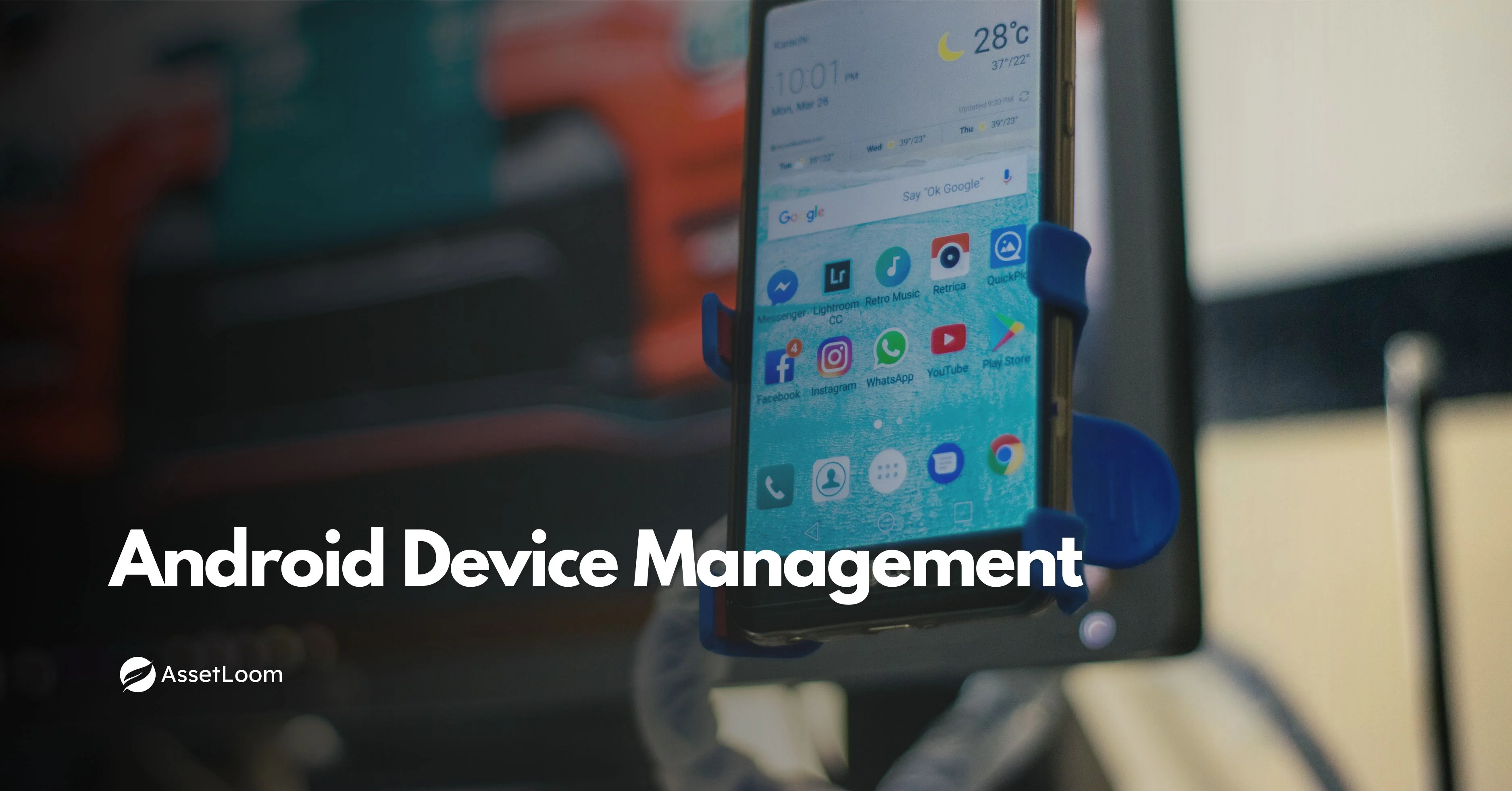Open Source IT Asset Tracking and Ticket Management
Open Source IT Asset Tracking and Ticket Management provide a cost-effective, flexible solution to streamline IT processes, boost productivity, and reduce downtime.
Open Source IT Asset Tracking and Ticket Management are two essential aspects of running an efficient IT department. However, many organizations struggle with these tasks, especially as they scale. Are your IT assets being tracked properly? Are your support tickets being resolved quickly? If these questions leave you unsure, you’re not alone.
For many businesses, keeping track of IT assets like hardware, software, licenses, and warranties can become a complex and time-consuming challenge. At the same time, the constant flow of support ticketsvranging from simple inquiries to major technical issues, can overwhelm IT teams, leading to delays and frustration.
In this blog, we’ll explore the differences between IT Asset Tracking and Ticket Management and why understanding them is crucial for improving IT operations. We’ll also show how open source solutions provide a cost-effective and customizable way to handle both tasks, making them ideal for businesses that want to streamline their IT management without high costs.
What is IT Asset Tracking?
IT Asset Tracking is the process of managing and monitoring an organization's IT assets throughout their lifecycle. This includes everything from hardware (computers, servers, mobile devices) to software (licenses, installations) and even digital resources (cloud subscriptions, virtual machines). The goal of asset tracking is to ensure that your organization knows what assets it owns, where they are located, who is using them, and their status at any given time.
Why is IT Asset Tracking Important?
- IT inventory Management: Keeps track of all IT assets, helping you avoid lost or misused equipment.
- Compliance: Ensures that software licenses and hardware warranties are up to date, reducing legal and financial risks.
- Budgeting: Provides insights into the lifecycle of assets, helping organizations plan for upgrades or replacements more effectively.
- Security: Tracking assets helps prevent theft and unauthorized access by making it easy to audit all IT equipment.
IT asset tracking is vital for organizations of all sizes, but the process can quickly become overwhelming without the right tools. A proper IT asset tracking software gives IT teams complete visibility into their inventory, enabling them to make better decisions and improve operational efficiency.
What is Ticket Management?
Ticket Management refers to the process of handling and resolving issues or requests that are submitted by users, employees, or IT staff. These issues are often recorded as "tickets" in a ticketing system, which helps IT teams organize, prioritize, and track the resolution of each request.
Ticket management is vital for ensuring that technical problems, service disruptions, or user queries are handled efficiently and effectively. When an issue is reported, a ticket is created, assigned to the appropriate team, and tracked until it is resolved.

Why is Ticket Management Important?
- Issue Resolution: Helps IT teams track and resolve technical issues quickly, minimizing downtime and disruption.
- Task Prioritization: Allows IT teams to prioritize urgent issues while ensuring that smaller problems don't fall through the cracks.
- Efficiency: Streamlines the communication between users and IT staff, making it easier to manage support requests and updates.
- Transparency: Provides clear visibility into the status of open tickets, ensuring that users know when to expect a resolution and helping IT teams stay on top of their workload.
Without an effective ticket management system, IT teams can easily become overwhelmed by the sheer volume of requests. A good ticket management system ensures that every issue gets the attention it deserves and that no tickets are left unresolved.
Key Differences Between IT Asset Tracking and Ticket Management
While both IT Asset Tracking and Ticket Management are crucial to IT operations, they serve different purposes and focus on distinct aspects of IT management. Understanding these differences can help you better organize and streamline your processes.
Purpose
- IT Asset Tracking focuses on managing and monitoring the physical and digital assets within your organization. This includes tracking hardware, software, licenses, warranties, and more.
- Ticket Management focuses on handling and resolving technical issues or requests from users. It’s about ensuring problems are logged, prioritized, and resolved in a timely manner.
Scope
- IT Asset Tracking covers the entire lifecycle of assets, from procurement and deployment to maintenance, upgrades, and decommissioning. It ensures you know where your assets are and who is using them at any given time.
- Ticket Management is concerned with the individual issues and requests reported by users or internal staff. It tracks the progress of each ticket from creation through to resolution, focusing on minimizing downtime and improving IT support efficiency.
Process Flow
- Asset Tracking involves cataloging and keeping detailed records of each asset. Regular audits, updates, and maintenance schedules are crucial to ensure accuracy and compliance.
- Ticket Management involves logging incidents, assigning them to the appropriate team members, and tracking the resolution process. It requires categorizing tickets by priority and monitoring progress until the issue is resolved.
Outcome
- IT Asset Tracking provides better visibility and control over your organization’s IT resources. It helps optimize asset use, reduce waste, and ensure compliance with licensing and warranties.
- Ticket Management aims to improve IT support and customer service by resolving issues quickly and efficiently. It ensures that technical problems don’t disrupt business operations for long periods.
Tools Involved
- Asset Tracking Tools like AssetLoom help track and manage all IT assets, providing insights into asset status, location, and lifecycle.
- Ticket Management Tools like OTRS, Zammad, and osTicket focus on logging, prioritizing, and tracking tickets, ensuring that IT teams can handle requests and issues effectively.
![]()
While both processes are essential to smooth IT operations, understanding the differences between them helps you decide how best to implement each system within your organization.
How Open Source Solutions Address Both
Open-source tools offer a flexible and cost-effective way to manage both IT Asset Tracking and Ticket Management. These solutions allow businesses to take full control of their systems, customize features to meet their needs, and avoid the high costs associated with proprietary software.
Benefits of Open Source for IT Asset Tracking
- Customization: Open-source tools allow organizations to tailor asset tracking systems to their specific needs. Whether you’re tracking hardware, software, or licenses, these tools can be configured to match your asset management requirements.
- Cost-Effective: Many open-source tools are free to use, reducing the financial burden on businesses. Even though there may be costs associated with customization or support, the initial cost savings can be substantial.
- Community Support: Open-source solutions often have a strong community of developers and users who contribute to improving the software, providing free updates, and offering support through forums and documentation.
- Flexibility: As your organization grows, you can modify open-source asset tracking systems to scale with your needs, whether it’s adding more assets, integrating with other systems, or enhancing security features.
Benefits of Open Source for Ticket Management
- Efficiency: Open-source ticket management tools like Zammad, osTicket, and OTRS help streamline support requests by automating ticket creation, assigning tasks, and tracking resolution progress. This makes managing large volumes of tickets much easier.
- Integrations: Many open-source ticket management systems offer integration capabilities with other tools, such as email systems, chat platforms, and project management tools. This allows your IT team to handle tickets more efficiently and maintain clear communication.
- Scalability: As your business grows, open-source ticket management tools can scale to handle more users, tickets, and departments. You can add additional features as needed without the need for expensive upgrades.
- Transparency and Reporting: Open-source ticketing tools offer features like detailed reporting, SLA tracking, and ticket histories. This helps your IT team prioritize tasks effectively and measure performance over time.
Integration Between IT Asset Tracking and Ticket Management
Integrating IT Asset Tracking and Ticket Management systems creates a seamless workflow that enhances both IT support and asset management. By connecting these two functions, you can ensure that your IT team has all the necessary information at their fingertips, leading to faster issue resolution and better resource management.
How Integration Improves Efficiency
- Streamlined Issue Resolution: When a support ticket is created, the integrated system can automatically link the issue to the relevant IT asset, whether it's a specific hardware device or a software application. This allows support teams to quickly identify the asset causing the problem and address the issue more effectively.
- Better Resource Allocation: Integration between asset tracking and ticket management helps IT teams allocate resources based on asset status. For example, if a piece of hardware is found to be faulty or nearing end-of-life through the asset management system, the team can prioritize ticket resolution or prepare for a replacement, preventing further issues down the line.
- Real-Time Asset Information: With integrated systems, IT staff can access up-to-date information on asset health, warranty status, and location while working on support tickets. This provides full context for resolving issues without needing to search through multiple systems, improving response times and reducing delays.
- Automated Updates: When an asset is repaired or replaced due to an issue logged in a ticket, the asset tracking system can be automatically updated to reflect the change. This ensures that your asset inventory is always accurate and up to date, while preventing the need for manual data entry.
- Improved Reporting and Analytics: Integrating both systems provides more robust reporting, as it allows for the tracking of ticket resolution times alongside asset performance. You can identify patterns, such as recurring issues with certain assets, which can inform future asset procurement or maintenance strategies.
Example Scenarios of Integration
- Hardware Failures: If a user reports a hardware failure, the support ticket can be automatically linked to the specific device in the asset tracking system. The IT team can then verify the warranty status, determine if the asset can be repaired, or schedule a replacement.
- Software Issues: For software-related issues, the system can check if the user has the latest version or license of the software, ensuring that the root cause of the issue isn’t tied to outdated software or expired licenses.
By integrating IT asset tracking and ticket management, you not only improve the efficiency of your IT department but also ensure better service for your employees and customers. This integration eliminates silos, reduces manual work, and provides better insights into both your assets and support operations.
Challenges and Considerations When Using Open Source Tools
While open-source solutions for IT Asset Tracking and Ticket Management provide many benefits, there are also some challenges and considerations that businesses should keep in mind before fully adopting these tools.
1. Technical Expertise Required
Open-source tools are highly customizable, but they often require a certain level of technical expertise to set up, configure, and maintain. Unlike proprietary software that comes with dedicated support teams, open-source solutions rely on internal IT teams or external developers for setup and ongoing maintenance.
- Solution: Ensure that your IT staff has the necessary skills, or consider hiring external consultants who specialize in the specific tools you're using.
2. Lack of Dedicated Customer Support
One of the drawbacks of open-source tools is the absence of formal customer support. While you can often find help through community forums, documentation, and user groups, it may not be as immediate or personalized as the support offered by paid software providers.
- Solution: Build a strong internal knowledge base, participate in open-source communities, or opt for premium support services offered by some open-source projects.
3. Scalability Concerns
As your organization grows, you may need to scale your open-source systems. While many open-source tools are scalable, this may require additional customization, resources, and ongoing management to ensure the system can handle increased demands.
- Solution: Plan for scalability early on and regularly assess your system’s performance as your business grows. Invest in monitoring tools and allocate resources for upgrades and customizations.
4. Security and Updates
Open-source tools are frequently updated by their communities, but these updates are not always as streamlined as with proprietary software. Without regular patches or updates, systems can become vulnerable to security risks, especially if they are not monitored closely.
- Solution: Set up regular monitoring for updates and security patches, and ensure that your team is proactive in applying necessary fixes to avoid potential vulnerabilities.
5. Integration Complexities
Integrating open-source asset tracking and ticket management tools with other enterprise systems (such as CRM, ERP, or cloud platforms) can sometimes be complex. Not all open-source tools are designed with out-of-the-box integrations, which may require custom development.
- Solution: Identify integration needs early in the process and make sure that the open-source solutions you choose support your current and future integrations. You may need to use third-party plugins or custom scripts to bridge gaps between systems.
6. Limited User Interface and Experience
Some open-source tools may not have the polished, user-friendly interfaces that proprietary solutions offer. While this can be fine for tech-savvy users, it may pose a challenge for non-technical staff.
- Solution: Consider providing training for your employees to ensure they can navigate and use the system effectively, or explore customizing the interface to make it more intuitive.
Efficiently managing IT assets and support tickets is essential for smooth business operations. Open Source IT Asset Tracking and Ticket Management offer a cost-effective, flexible way to streamline these processes, boost productivity, and reduce downtime.

Related Blogs
Subscribe for Expert Tips and Updates
Receive the latest news from AssetLoom. right in your inbox

